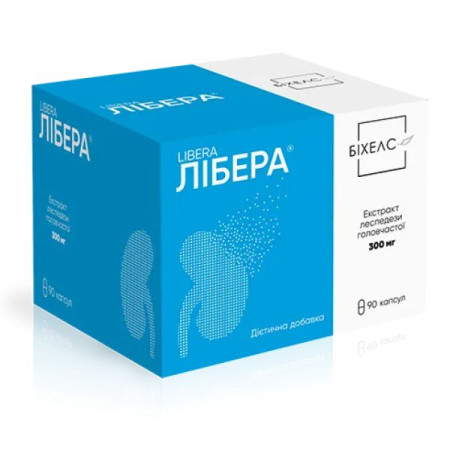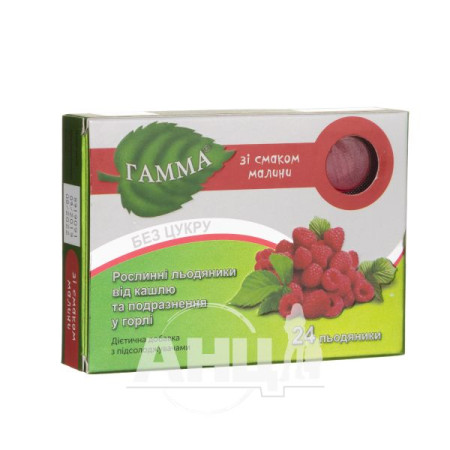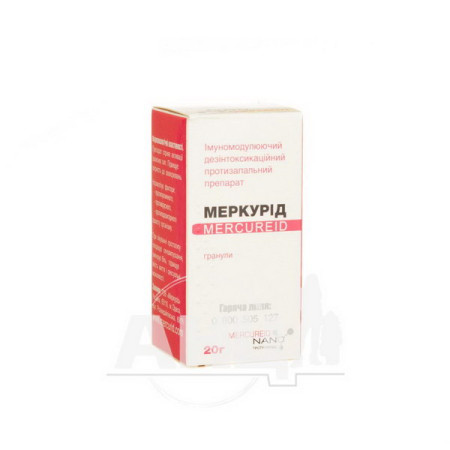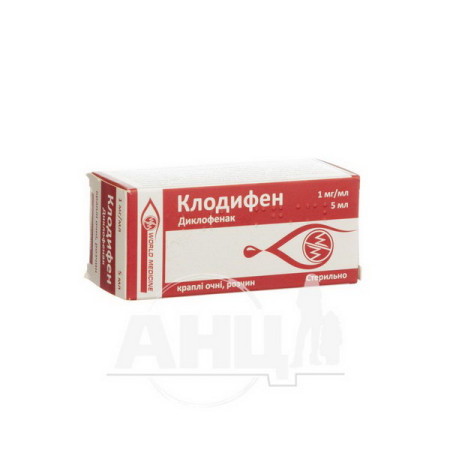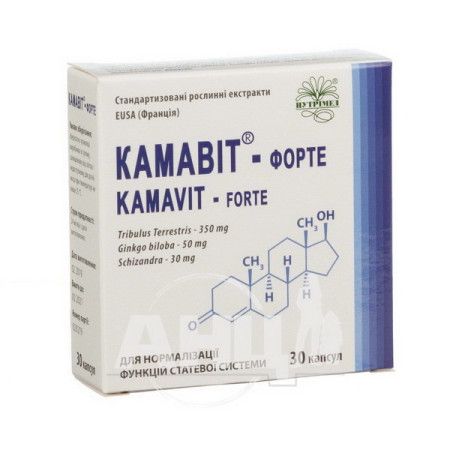Ultravist 370 solution for injection and infusion 370 mg/ml bottle 100 ml No. 1
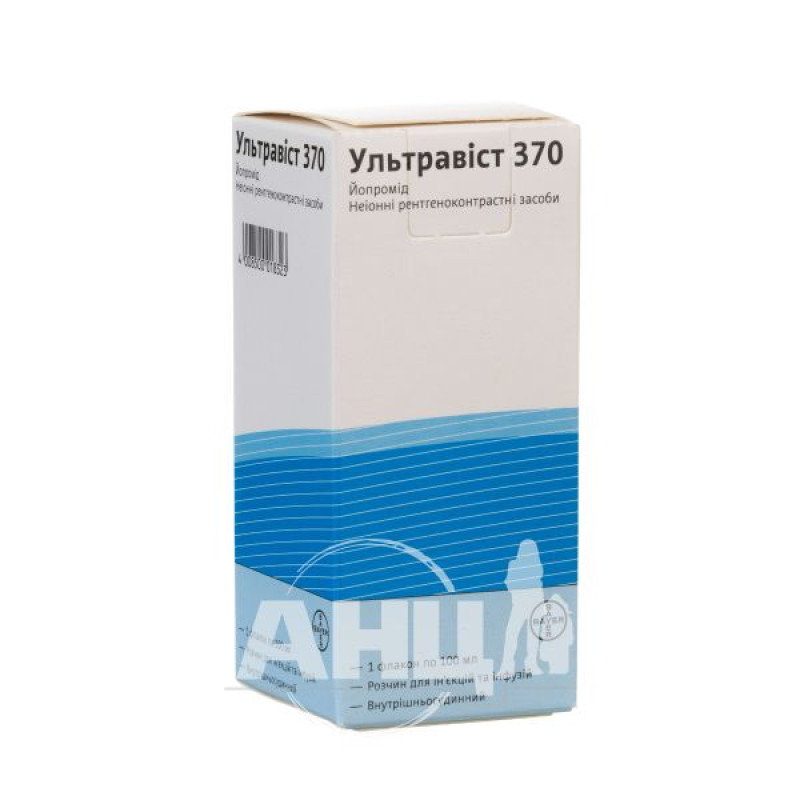
Instructions for Ultravist 370 solution for injection and infusion 370 mg/ml bottle 100 ml No. 1
Composition
active ingredient: iopromide;
Ultravist 300: 1 ml contains 0.623 g of iopromide, corresponding to 300 mg of iodine;
Ultravist 370: 1 ml contains 0.769 g of iopromide, corresponding to 370 mg of iodine;
Excipients: calcium sodium edetate, trometamol, sodium hydroxide, diluted hydrochloric acid, water for injections.
Dosage form
Solution for injection and infusion.
Main physicochemical properties: clear solution, free from particles.
| Indicators | Ultravist 300 | Ultravist 370 |
| Iodine concentration (mg/ml) | 300 | 370 |
| Osmolality at 37°C (osm/kgH2O) | 0.59 | 0.77 |
| Osmolarity at 37°C (osm/L of solution) | 0.43 | 0.49 |
| Viscosity (MPa s) | ||
| at a temperature of 20°C | 8.9 | 22.0 |
| at a temperature of 37°C | 4.7 | 10.0 |
| Density (g/ml) | ||
| at a temperature of 20°C | 1,328 | 1,409 |
| at a temperature of 37°C | 1,322 | 1,399 |
| pH value | 6.5-8.0 | 6.5-8.0 |
| Osmotic pressure at 37°C | ||
| MPa | 1.59 | 2.02 |
| ATM | 15.7 | 19.9 |
| Molecular weight (g/mol) | 791.12 | |
Pharmacotherapeutic group
Iodine-containing radiopaque contrast agents. Water-soluble low-osmolar nephrotropic radiopaque contrast agents. Iopromide.
ATX CODE VO8AB05.
Pharmacological properties
Pharmacodynamics.
The contrast agent (iopromide) in all forms of the Ultravist drug is a nonionic, water-soluble derivative of triiodosubstituted isophthalic acid with a molecular weight of 791.12 g/mol, in which tightly bound iodine absorbs X-rays.
Contrast-enhanced mammography. Nine studies involving 1531 patients examined the diagnostic performance in appropriate settings. In studies evaluating suspected lesions, contrast-enhanced mammography demonstrated a sensitivity of 96.9% to 100% and a specificity of 69.7% to 87%, compared with digital mammography, which had a sensitivity of 96.9% and a specificity of 42.0%.
In studies evaluating the accuracy of contrast-enhanced mammography compared with other diagnostic methods, contrast-enhanced mammography demonstrated a sensitivity of 100% and a negative predictive value of 100% compared with MRI (93% and 65%, p = 0.04 and p < 0.001, respectively). Compared with full-field digital mammography combined with ultrasound, contrast-enhanced mammography demonstrated a sensitivity of 92.3% vs. 89.8%, p < 0.05, a positive predictive value of 93% vs. 88.7%, p < 0.01, and an accuracy of 90.2% vs. 87%, p < 0.05.
In patients with contraindications to MRI, both mammography and contrast-enhanced mammography correlated significantly with histopathological classification. Contrast-enhanced mammography showed a sensitivity of 98.8% and specificity of 54.55% versus 89.16% and 36.36% for mammography, respectively.
In studies evaluating preoperative evaluation and staging of breast cancer, contrast-enhanced mammography demonstrated sensitivity, specificity, positive predictive value, negative predictive value, and accuracy of 93%, 98%, 90%, 98%, and 97%, respectively. Contrast-enhanced mammography changed the established surgical plan in 18.4% of cases.
Pharmacokinetics.
Absorption and distribution
After intravenous administration, the plasma concentration of iopromide decreases rapidly due to distribution into the extracellular space and is subsequently eliminated. The total volume of distribution at steady state is about 16 l, which approximately corresponds to the volume of the extracellular space.
Protein binding is negligible (about 1%). There is no evidence that iopromide crosses the intact blood-brain barrier. Experimental studies in animals have shown that a small amount of iopromide can cross the placental barrier (≤ 0.3% of the administered dose in rabbit fetuses).
After administration into the bile duct and/or pancreatic duct during endoscopic retrograde cholangiopancreatography (ERCP), iodinated contrast agents are systemically absorbed and reach peak plasma concentrations within 1 to 4 hours after administration. The maximum serum iodine concentration after an average dose of approximately 7.3 g of iodine was approximately 40 times lower than the maximum serum concentration after the corresponding intravenous administration.
Metabolism
Iopromide is not metabolized.
Elimination
The terminal half-life of iopromide is approximately 2 hours regardless of dose. When used in the studied dose range, the mean total clearance of iopromide is 106 ± 12 ml/min, which is equivalent to a renal clearance of 102 ± 15 ml/min. This indicates that iopromide is excreted exclusively by the kidneys. Only about 2% of the administered dose is excreted in the feces within 3 days.
After administration into the bile duct and/or pancreatic duct during ERCP, serum iodine concentration returns to the previous (before iopromide administration) level within 7 days.
Linearity/nonlinearity
The pharmacokinetic data of iopromide in humans vary in a dose-proportional manner (e.g. Cmax, AUC) or dose-dependent manner (e.g. Vss, t½).
Certain patient groups
Elderly patients (65 years and older)
In middle-aged (49–64 years) and elderly patients (65–70 years) without severe renal impairment, total plasma clearance ranged from 74 to 114 mL/min in middle-aged patients (mean 102 mL/min) and from 72 to 110 mL/min in elderly patients (mean 89 mL/min), i.e. slightly lower than that observed in younger, relatively healthy subjects (88 to 138 mL/min, mean 106 mL/min). Individual half-life values ranged from 1.9–2.9 hours and 1.5–2.7 hours, respectively. The terminal half-life was similar to that in healthy young volunteers (range 1.4–2.1 hours). A slight difference can be expected, which is associated with the physiological decrease in glomerular filtration rate with age.
Children
The pharmacokinetic properties of iopromide in children have not been studied (see section "Method of administration and dosage").
Patients with renal insufficiency
In patients with renal insufficiency, the half-life of iopromide increases due to a decrease in glomerular filtration rate.
In patients with mild to moderate renal insufficiency (creatinine clearance 30–80 mL/min/1.73 m2), plasma clearance decreases to 49.4 mL/min/1.73 m2 (EC = 53%), which is also typical for patients with severe renal insufficiency (creatinine clearance 30–10 mL/min/1.73 m2). In patients on dialysis, the following values have been determined: 18.1 mL/min/1.73 m2 (EC = 30%).
The mean elimination half-life is 6.1 hours (CV = 43%) in patients with mild to moderate renal impairment (creatinine clearance 30–80 mL/min/1.73 m2) and 11.6 hours (CV = 49%) in patients with severe renal impairment.
The amount of drug recovered in the urine 6 hours after administration is up to 38% in patients with mild to moderate renal failure and 26% in patients with severe renal failure. In healthy volunteers, this figure was 83%. Within 24 hours after administration of iopromide, up to 60% of the drug was eliminated in patients with mild to moderate renal failure, 51% in patients with severe renal failure, and more than 95% in healthy volunteers.
Iopromide is removed by hemodialysis. Approximately 60% of iopromide can be removed during a 3-hour dialysis session.
Patients with hepatic impairment
In patients with impaired liver function, excretion is not impaired, as iopromide is not metabolized and only 2% of the dose is excreted in the feces.
Indication
The drug is used exclusively for diagnosis.
Ultravist 300 and Ultravist 370 are used for contrast during computed tomography (CT), angiography, angiocardiography, digital subtraction angiography (DSA); urography and examination of body cavities (except myelography, ventriculography, cisternography).
Ultravist 300 and Ultravist 370 are used in adult women during contrast-enhanced mammography to evaluate and detect known or suspected breast lesions as an adjunct to mammography (with or without ultrasound), or as an alternative to magnetic resonance imaging (MRI) when MRI is contraindicated or unavailable.
Contraindication
Hypersensitivity (allergic reaction) to the active substance iopromide and/or to any of the excipients.
Uncontrolled thyrotoxicosis.
Interaction with other medicinal products and other types of interactions
Biguanides (metformin). In patients with acute renal failure or severe chronic kidney disease, the excretion of biguanides may be reduced, leading to their accumulation and the development of lactic acidosis. Since the use of Ultravist may lead to the development or progression of renal failure, patients receiving metformin may be at increased risk of developing lactic acidosis, especially if there is a history of renal failure (see section "Special instructions. Intravascular administration - Acute kidney injury"). Depending on the indicators of renal function, the possibility of discontinuing metformin therapy should be carefully considered.
Interleukin-2: Previous therapy (up to several weeks) with interleukin-2 has been associated with an increased risk of delayed reactions to Ultravist.
Radioisotopes. After intravascular administration, iodinated contrast agents may reduce the ability of thyroid tissue to absorb isotopes. As a result, the diagnosis and treatment of thyroid diseases with thyrostatic radioisotopes may be impaired for up to several weeks and in some cases even longer after administration of Ultravist.
Application features
General information for all indications
Administration of Ultravist may be associated with dose-dependent pseudoallergic (allergic)/hypersensitivity reactions or other idiosyncratic reactions in the form of cardiovascular, respiratory and skin symptoms.
Allergic-like hypersensitivity reactions of varying severity, up to severe reactions, including shock, may develop (see section 4.8). Most of these reactions occur within 30 minutes after administration of the drug. However, delayed reactions (occurring several hours or days after administration) may occur.
The risk of developing hypersensitivity reactions is higher in the presence of the following conditions and diseases:
reaction to previous administration of contrast agents;
bronchial asthma or other tendency to allergic reactions.
A careful history should be taken regarding the presence of the above-mentioned risk factors each time before the use of contrast media is initiated.
The use of Ultravist should be particularly restricted in patients with allergic diathesis due to the increased risk of hypersensitivity reactions (including severe reactions).
However, such reactions are irregular and unpredictable in nature.
Patients taking beta-blockers may have more pronounced hypersensitivity reactions (especially in the presence of bronchial asthma) and be insensitive to therapy with standard beta-agonists.
Patients with cardiovascular disease are more likely to develop severe or even fatal hypersensitivity reactions.
In cases of prescribing diagnostic studies using contrast agents to patients at increased risk of developing allergic-like reactions, patients with a history of acute moderate to severe reactions, patients with asthma or allergies, the feasibility of premedication with corticosteroids should be considered.
Emergency preparedness
Regardless of the amount and route of administration of contrast media, even minor allergy-like symptoms may be the first signs of a serious anaphylactoid reaction requiring treatment. For this reason, iodinated contrast media should only be administered in a hospital setting where emergency care is available, the necessary equipment and drugs are available, physicians with sufficient clinical experience, and experienced paramedical staff are available.
The unit should be able to immediately initiate emergency care for patients to treat serious reactions and have direct access to necessary medications and surgical kits for immediate care.
The patient should be observed for at least half an hour after the procedure is completed, as experience shows that most serious cases occur within this time period.
Severe skin adverse reactions
Severe skin reactions have been reported with iopromide at a frequency of "not known", including Stevens-Johnson syndrome (SJS), toxic epidermal necrolysis (TEN), drug reaction with eosinophilia and systemic symptoms (DRESS), and acute generalized exanthematous pustulosis (AGEP), which may be life-threatening or fatal, and exfoliative dermatitis. Patients should be informed of the signs and symptoms of such reactions and closely monitored for their occurrence.
In children, the initial manifestation of a rash may be mistaken for an infection, so physicians should consider the possibility of a reaction to iopromide in children who develop signs of a rash and fever.
Most of these reactions occurred within 8 weeks (GGEP 1–12 days, DRESS 2–8 weeks, SSD/TEN from 5 days to 8 weeks).
If a patient has developed severe skin reactions such as SJS, TEN, GGEP or DRESS syndrome while taking iopromide, iopromide should not be re-administered to that patient at any time.
Thyroid dysfunction
Iodine-containing radiopaque substances affect thyroid function due to the presence of free iodides in solutions; in addition, additional iodides are released in the body after administration due to deiodination.
In patients with hyperthyroidism or goiter or suspected of having these diseases, a particularly careful risk/benefit analysis of the drug administration is necessary, since iodinated contrast agents can induce the development of hyperthyroidism and thyrotoxic crisis in such patients. In view of this, it is necessary to check the thyroid function before administering Ultravist. Preventive thyrostatic therapy should be considered in patients with hyperthyroidism or suspected of having it.
Pediatric Population: Thyroid dysfunction characterized by hypothyroidism or transient thyroid suppression has been reported in pediatric patients up to 3 years of age following both single and multiple exposures to iodinated contrast media. The incidence of these events ranges from 1 to 15% depending on the age of the pediatric patient and the dose of iodinated contrast media and is more common in neonates and premature infants. Neonates may also have been exposed in utero if their mothers received iodinated contrast media during pregnancy.
Younger age, very low birth weight, prematurity, underlying medical conditions that affect thyroid function, hospitalization in neonatal or pediatric intensive care units, and congenital heart disease are associated with an increased risk of hypothyroidism following exposure to iodinated contrast agents. Pediatric patients with congenital heart disease may be at greatest risk because they often require high doses of contrast during invasive cardiac procedures. Underactive thyroid in early life may adversely affect cognitive and neurological development and require thyroid hormone replacement therapy. Individualized monitoring of thyroid function based on risk factors should be performed following exposure to iodinated contrast agents, especially in term and preterm neonates.
CNS disorders
Patients with CNS disorders may be at increased risk of neurological complications associated with the administration of iopromide. Neurological complications are more common during cerebral angiography and related procedures.
Encephalopathy has been reported with iopromide (see section 4.8). Contrast encephalopathy may present with symptoms and signs of neurological dysfunction such as headache, visual disturbances, cortical blindness, confusion, seizures, loss of coordination, hemiparesis, aphasia, loss of consciousness, coma, and cerebral edema. Symptoms usually occur within minutes to hours of iopromide administration and resolve within a few days.
Factors that increase the permeability of the blood-brain barrier promote the passage of contrast media into the brain tissue, which may lead to CNS reactions such as encephalopathy. If contrast encephalopathy is suspected, appropriate medical treatment should be initiated and iopromide should not be re-administered.
Hydration
All patients should be adequately hydrated prior to intravascular administration of Ultravist. This applies in particular to patients at increased risk of acute kidney injury due to the use of contrast media (see section “Special warnings and precautions for use. Intravascular administration – Acute kidney injury”), as well as patients with polyuria, oliguria, neonates, infants, young children and the elderly.
Adequate hydration status can be achieved in most patients with oral fluid administration as needed.
Prophylactic intravenous hydration should be considered, especially in patients at increased risk of acute kidney injury due to contrast media. The decision on which patients require prophylactic intravenous hydration should be based on the recommendations and evidence-based clinical guidelines, as well as the individual benefit-risk ratio. This should include consideration of the dose used (e.g. high dose), the route of administration (first-pass effect) and the status of renal function (presence of severe renal impairment). The presence of concomitant diseases should be taken into account. In the case of concomitant cardiac diseases (e.g. progressive heart failure), prophylactic intravenous hydration may lead to serious cardiac complications (see also sections 4.4 and 4.8).
State of anxiety
Severe states of excitement, anxiety and pain may increase the risk of side effects and enhance the body's reactions associated with the administration of contrast medium. To reduce excitement in this category of patients, diagnostic procedures should be carried out with special caution.
Tolerance test
Low-dose contrast media tolerance testing is not recommended because it has no prognostic value. Furthermore, tolerance testing itself has occasionally resulted in severe, even fatal, hypersensitivity reactions.
Intravascular administration
Cardiovascular diseases
Patients with severe heart disease or severe ischemic heart disease are at increased risk of clinically significant hemodynamic changes and arrhythmias.
Patients with heart failure, severe coronary artery disease, unstable angina, valvular heart disease, recent myocardial infarction, coronary bypass grafts, and pulmonary hypertension are particularly susceptible to cardiac reactions.
Intravascular administration of Ultravist may cause pulmonary edema in patients with heart failure.
Acute kidney injury
After intravascular administration of Ultravist, contrast-induced acute kidney injury may occur in the form of transient renal dysfunction. Occasionally, acute renal failure may develop.
Risk factors include:
existing renal insufficiency (see also section "Method of administration and dosage" for patients with renal insufficiency),
dehydration (see also section "Special instructions for use", General information for all indications - Hydration),
diabetes,
multiple myeloma/paraproteinemia,
administration of repeated and/or large doses of Ultravist.
Patients with moderate to severe renal impairment (eGFR 44–30 mL/min/1.73 m2) are at increased risk of acute kidney injury due to the use of contrast media in the case of intra-arterial administration of contrast media and renal first-pass exposure (e.g., administration of contrast media into the renal artery, thoracic, and suprarenal abdominal aorta).
Patients with severe renal impairment (eGFR < 30 ml/min/1.73 m2) are at increased risk of acute kidney injury due to the use of contrast media when intravenous or intraarterial administration of contrast media with renal exposure “second pass” (e.g. after injection) into the right heart, pulmonary artery, carotid artery, subclavian artery, coronary artery, mesenteric artery or infrarenal artery) (see also section “Special warnings and precautions for use”, General information for all indications – Hydration).
Patients on dialysis (even those with severe renal insufficiency without residual renal function) may receive contrast media for radiological procedures, as iodinated substances are removed during dialysis. Hemodialysis should be performed immediately after radiological examination.
In case of severe renal insufficiency, any additional severe liver dysfunction may lead to a significant delay in the elimination of contrast medium, which may require hemodialysis.
Diabetes mellitus
To prevent lactic acidosis in diabetic patients treated with metformin, serum creatinine should be measured prior to intravascular administration of iodinated contrast media (see section 4.5).
Based on renal function, consideration should be given to discontinuing metformin treatment.
In the case of emergency care and limited or unknown renal function, the physician should carefully weigh the risks/benefits of the contrast medium examination and take the necessary precautions by discontinuing metformin therapy, hydrating the patient, monitoring renal function, serum lactate and pH, and closely monitoring the patient for any clinical signs of lactic acidosis.
Thromboembolic events
One of the properties of nonionic contrast agents is that they have very little effect on normal physiological functions of the body. As a result, nonionic contrast agents have less anticoagulant activity in vitro than ionic agents. In addition to the contrast agent, numerous factors can contribute to the development of thromboembolic events, including the duration of the procedure, the number of injections, the material from which the catheter and syringe are made, the state of the underlying disease, and concomitant therapy.
Given this, when performing a vascular catheterization procedure, the angiography technique should be carefully monitored and the catheter should be frequently flushed with saline (if possible, with the addition of heparin) and the duration of the procedure should be shortened in order to minimize the risk of procedure-related thrombosis and embolism.
CNS disorders
Caution should be exercised when administering intravascularly to patients with acute stroke or acute intracranial hemorrhage, to patients with diseases that may compromise the blood-brain barrier, and to patients with cerebral edema or acute demyelination. The incidence of central convulsions may increase after administration of contrast media in patients with intracranial tumors, metastases, or epilepsy. Neurological symptoms resulting from cerebrovascular disease, intracranial tumors or metastases, degenerative, or inflammatory processes may be exacerbated by intraarterial administration of contrast media. Intraarterial injection of contrast media may cause vasospasm with subsequent cerebral ischemia. Patients with symptoms of cerebrovascular disorders, recent stroke, or frequent transient ischemic attacks are at higher risk of neurological complications induced by contrast media.
Other risk factors
Patients with pheochromocytoma may be at increased risk of developing hypertensive crisis after intravascular administration of contrast agents.
Administration of Ultravist may exacerbate the symptoms of myasthenia gravis.
Introduction into body cavities
Patients with acute pancreatitis and acute cholangitis should not undergo ERCP (endoscopic retrograde cholangiopancreatography) with Ultravist until the benefit/risk ratio has been carefully assessed. The procedure should be postponed until any acute symptoms have resolved (3-4 weeks), unless urgent therapeutic measures are required, such as removal of obstructing stones or bypass of a stenosis.
Contrast-enhanced mammography
Contrast-enhanced mammography results in a higher exposure of the patient to ionizing radiation than standard mammography. The radiation dose depends on the thickness of the breast, the type of mammography system and the system settings. The total radiation dose during contrast-enhanced mammography remains below the limit set in international mammography guidelines (below 3 mGy).
Important warnings regarding certain excipients
This medicine contains less than 1 mmol sodium (23 mg) per dose (based on the average amount for a person weighing 70 kg), that is to say essentially sodium-free.
Any unused product and/or waste material should be disposed of in accordance with national requirements.
Ultravist must be warmed to body temperature before use.
Ultravist is supplied as a ready-to-use, clear, colourless to pale yellow solution.
Contrast media should be visually inspected before use. Since Ultravist is a solution with a high concentration of the active substance, crystallization (cloudy, milky appearance of the solution and/or sediment at the bottom or floating crystals) may occur very rarely. Contrast media should not be used if there is a change in color, the presence of particles (including crystals) or damage to the container.
The contrast medium solution should be drawn into a syringe or into a dropper bottle attached to the infusion set only immediately before the start of the study.
The rubber stopper of the vial should be pierced only once to prevent large amounts of microparticles from the stopper from entering the solution. It is recommended to use long-tip cannulas with a diameter of no more than 18 G for piercing the rubber stopper and drawing the contrast medium (special cannulas with a side hole such as Nocore-Admix are best suited).
Contrast solutions for injection or infusion are intended for single use. Any contrast solution that has not been used during a single procedure should be discarded.
If an automated drug delivery system is used, the drug manufacturer must provide evidence of its suitability for use. The manufacturer's instructions for use of the device must be followed.
The use of automated systems for administration to newborns, infants and young children is prohibited.
Use during pregnancy or breastfeeding
There are no adequate and well-controlled studies in pregnant women. The safety of non-ionic contrast agents in pregnant women has not been sufficiently demonstrated. Since all radiation exposure should be avoided during pregnancy, the benefits of X-ray examination - with or without contrast - should be carefully weighed. Animal studies have not shown any harmful effects on pregnancy, embryonal and foetal development, parturition or postnatal development after administration of iopromide for diagnostic procedures in humans. When assessing the risk/benefit ratio of the use of iodinated contrast agents, the sensitivity of the foetal thyroid gland to iodine should also be taken into account.
The safety of Ultravist in infants has not been studied. Iodinated contrast agents are excreted in very small amounts in breast milk. No harm to infants is expected (see section "Special warnings and precautions for use").
Free iodides contained in the contrast medium solution and iodides additionally released in the body by deiodination accumulate in breast milk in high quantities. To protect the breastfed infant from iodide overload (risk of blocking thyroid hormone synthesis), it is recommended for safety reasons to suspend breastfeeding of infants under 4 months of age for 2 days after administration of the drug to the mother and to express and discard breast milk.
Ability to influence reaction speed when driving vehicles or other mechanisms
No effect on the ability to drive or use machines has been established.
Method of administration and doses
General information
The physician determines the appropriate iodine concentration and volume required on an individual basis. The recommended volumes of iopromide solutions of different concentrations for each body area are given in Table 1.
Do not exceed a dose of 1.5 g iodine/kg body weight on any day of the study. For Ultravist 300 this corresponds to a volume of 5 ml/kg body weight and for Ultravist 370 to a volume approximately equal to 4 ml/kg body weight.
Table 1. Use of iopromide solutions of various concentrations for injections and infusions in X-ray diagnostics (recommended concentrations of solutions are highlighted in bold)
| Areas of application | Concentration bound iodine (mg/ml) | Volume (ml) | |
| Conventional angiography | Digital subtraction angiography | ||
| Cerebral angiography | |||
Aortic arch | 300 | 50–80 | 25–40 |
| 370 | 40–60 | 25–30 | |
| A. carotiscommunis | 300 | 10–12 | 6–8 |
| A. carotis externa | 300 | 4–8 | 4–6 |
| A. vertebralis | 300 | 4–8 | 4–6 |
| Thoracic angiography | |||
| Aorta | 300 | 50–70 | 30–50 |
| 370 | 50–60 | 25–30 | |
| Abdominal angiography | |||
| Aorta | 300 370 | 50–80 40–60 | 25–35 20–25 |
| A. coeliaca | 300 | 25–35 | 15–20 |
| A. mesenterica superior | 300 | 30–40 | 15–20 |
| Inferior mesenteric artery | 300 | 15–25 | 8–12 |
| A. splenica | 300 | 15–30 | 8–15 |
| A. hepatica | 300 | 20–40 | 10–20 |
| A. renalis | 300 | 8–15 | 5–8 |
| Angiography of the extremities | |||
| Upper limbs | |||
| Arteriography | 300 | 20–30 | 10–15 |
| Phlebography | 300 | 20–30 | 8–15 |
| Lower limbs | |||
| Pelvic arteriography – lower extremities | 300 370 | 70–150 60–120 | 40–80 40–70 |
| A. femoral | 300 | 20–30 | 10–15 |
| Phlebography | 300 | 60–80 | 60–80 |
| Angiocardiography | |||
| Ventricles | 370 | 40–60 | 20–30 |
| A. coronariasinistra | 370 | 6–10 | 4–5 |
| A. coronariadextra | 370 | 4–8 | 4–5 |
| Computed tomography | |||
| Head, adults | 300/370 | 100 | |
| children | 300 | 2.0 ml/kg body weight | |
| Whole body, adults | 300/370 | 100–150 | |
| children | 300 | 1.0–3.0 ml/kg body weight | |
| Intravenous urography | |||
| Adults | 300/370 | 1–1.5 ml/kg body weight | |
| Newborns weighing <5 kg | 300/370 | 4 ml/kg body weight | |
| Infants weighing 5 to 10 kg | 300/370 | 3 ml/kg body weight | |
| Young children weighing 10 to 30 kg | 300/370 | 2 ml/kg body weight | |
| School-age children, > 30 kg | 300/370 | 1.5 ml/kg body weight | |
| Body cavities | |||
| Arthrography | 300/370 | 2–15 | |
| Hysterosalpingography | 300/370 | 10–25 | |
| Fistulography | 300/370 | 1–10 | |
| ERCP | 300/370 | 10–30 | |
| Galactography | 300/370 | 1–3 | |
| Esophagus–stomach–intestine | 300/370 | 10–100 | |
| Ureterography, retrograde in
Specifications
Characteristics
Active ingredient
Iopromide
Adults
Can
ATC code
V MISCELLANEOUS MEDIA; V08 CONTRAST MEDIA; V08A IODINE-CONTAINING X-RAY CONTRAST MEDIA; V08A B Water-soluble low-osmolar nephrotropic X-ray contrast media; V08A B05 Iopromide
Country of manufacture
Germany
Diabetics
With caution
Dosage
370 mg/ml
Drivers
Can
For allergies
With caution
For children
Can
Form
Vials
Method of application
Injections
Nursing
It is impossible.
Pregnant
Considering the benefit/risk ratio
Producer
Bayer
Quantity per package
1 bottle
Trade name
Ultravist
Vacation conditions
By prescription
Reviews
There are no reviews for this product. There are no reviews for this product, be the first to leave your review.
Answers & questions
Add your question and we will answer as soon as possible.
No questions about this product, be the first and ask your question.
You are watched
1 120.81 грн.
| |||



